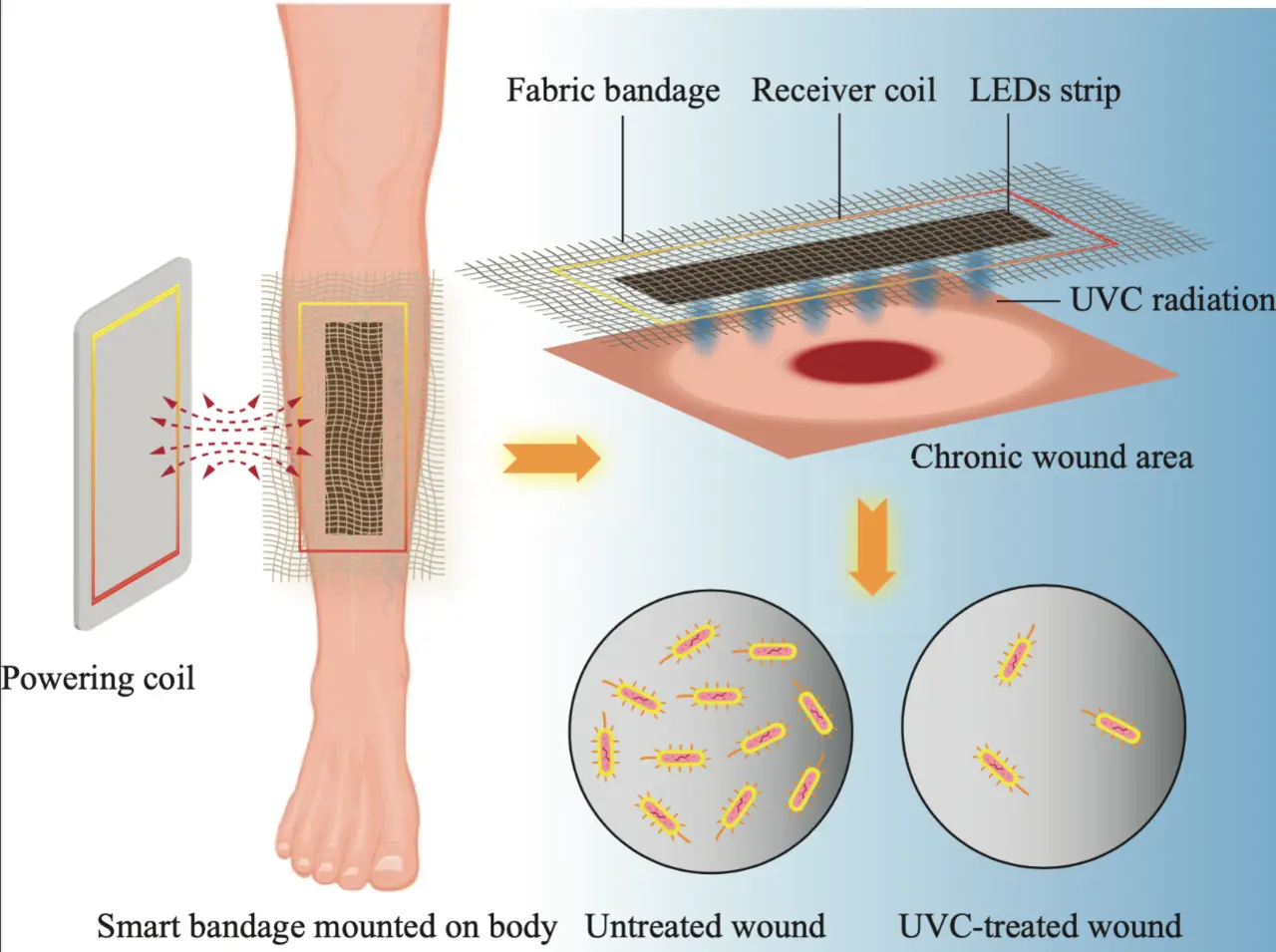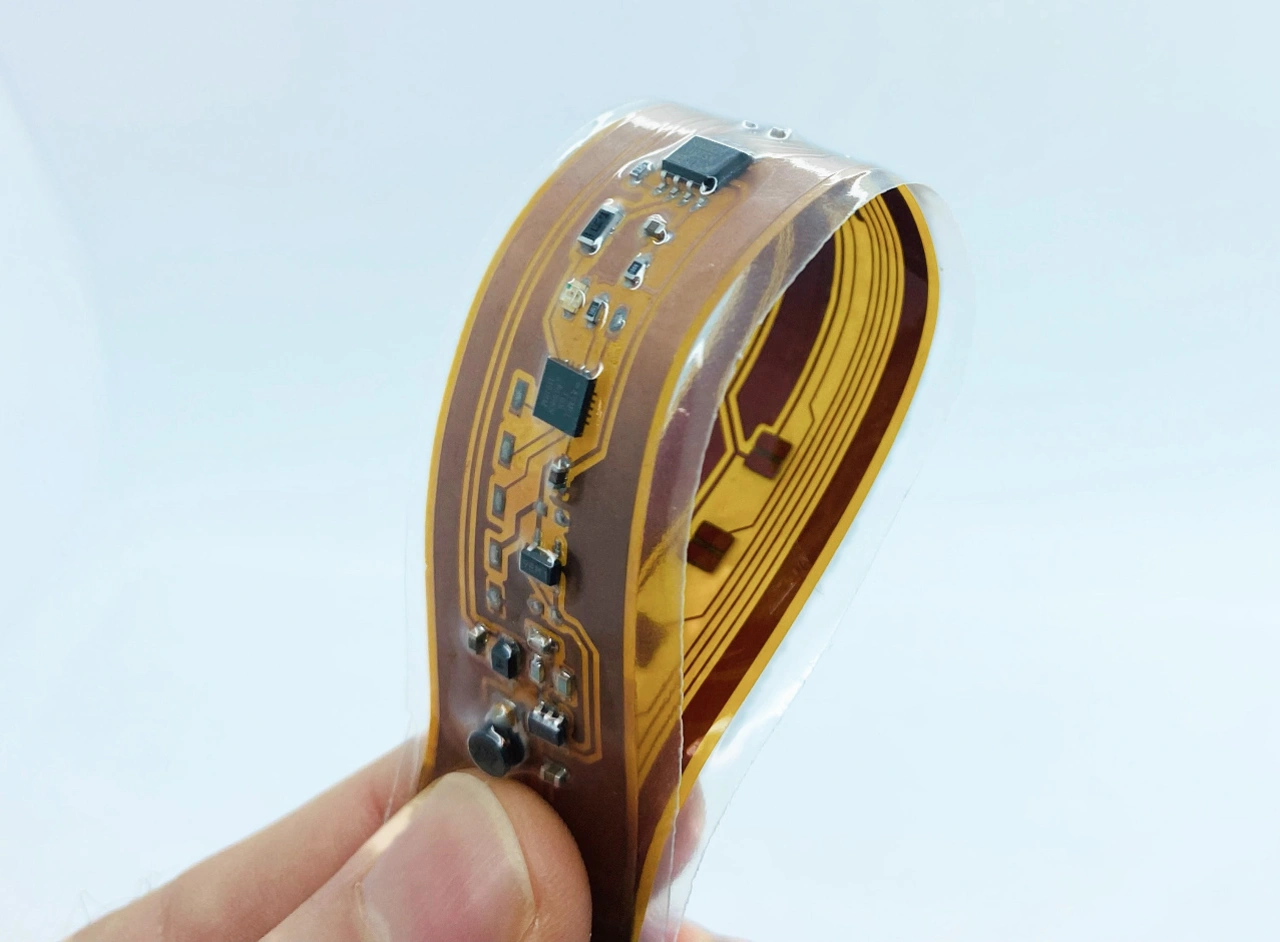Wireless Power // Medical Wearables
Smart Bandage Heals Wounds Without Drugs
A new generation of wirelessly powered »smart bandages« is designed to help patients with non-healing wounds avoid infection. Embedded LEDs sterilize with ultraviolet light, preventing the growth of bacteria without antibiotics.
UV light is already widely used to sterilize surgical equipment and medical surfaces. Treating bacterial infections in non-healing wounds with UV light instead of drugs could help slow the emergence of dangerous new strains of antibiotic-resistant bacteria, known as "superbugs."
To do this, British and French researchers have integrated a thin, flexible induction coil into the fabric of the bandage. The coil uses wireless energy transfer with magnetic resonance to power the UV LEDs owithout batteries. Only a second coil needs to be connected to the mains - this transmits the energy. The LEDs can be powered indefinitely by keeping the transmitting and receiving coils close together until the antimicrobial treatment is complete.

Using light to combat bacteria and antibiotic resistance
In laboratory tests, the researchers exposed samples of a Gram-negative bacterial strain called Pseudoalteromonassp. D41 to UV light delivered by the smart bandage. The tests showed that the smart bandage slowed and stopped the growth of Pseudoalteromonas sp. D41 on the surface of slides, killing the bacteria within six hours. The researchers plan to use this system in medicine to combat bacteria in chronic, non-healing wounds.
Professor Steve Beeby, RAEng Chair in Emerging Technologies at the University of Southampton, says: »Our approach could be of great use in treating persistent wounds and represents a major advance over conventional smart bandages that attempt to monitor the condition of the wound.«

Sustainable Wearables
Dr. Mahmoud Wagih, who developed the wound bandage's wireless power system, says, »Batteries are bulky, inflexible and need to be changed regularly. This makes them difficult to use in dressings that need to conform closely to the contours of the patient's body to provide reliable treatment for several hours. The system we developed is flexible and can be seamlessly integrated into the fabric of a dressing to power the LEDs, which deliver UV-C light to any surface. Our wireless power technology will enable wearables to grow sustainably in healthcare as an alternative to drug treatments.«
The smart bandage is based on wireless magnetic resonance energy transfer technology for powering standard textiles demonstrated by embroidery or screen printing, originally developed by Dr. Wagih and his colleagues at the University of Southampton. This feature is what made the smart bandage possible in the first place. Now, the researchers plan to continue developing the dressing, integrating sensors to monitor wound progression and testing the technology in clinical settings in the coming years. (uh)









